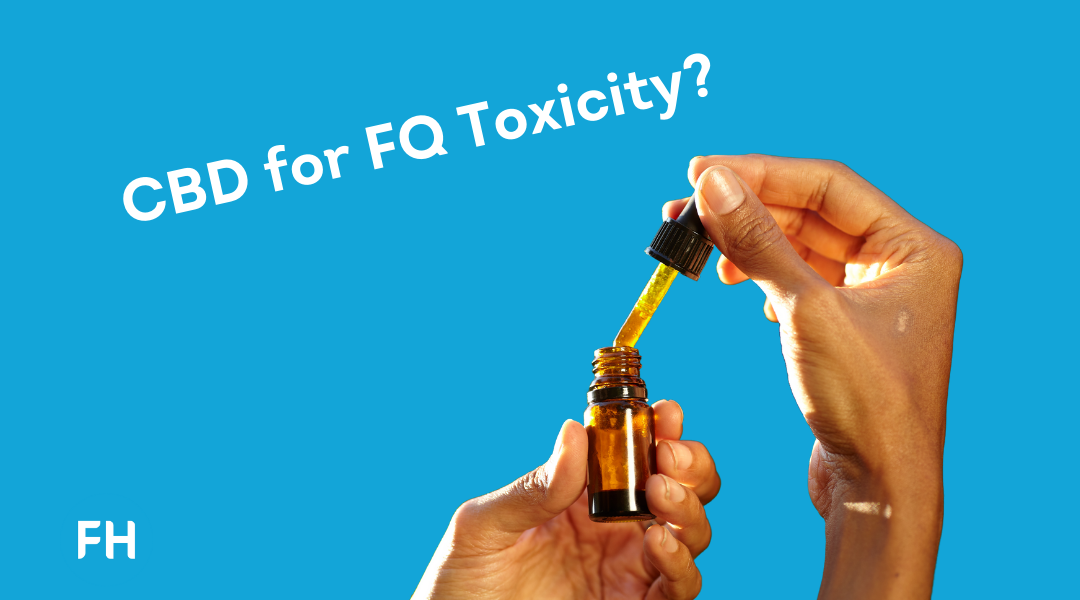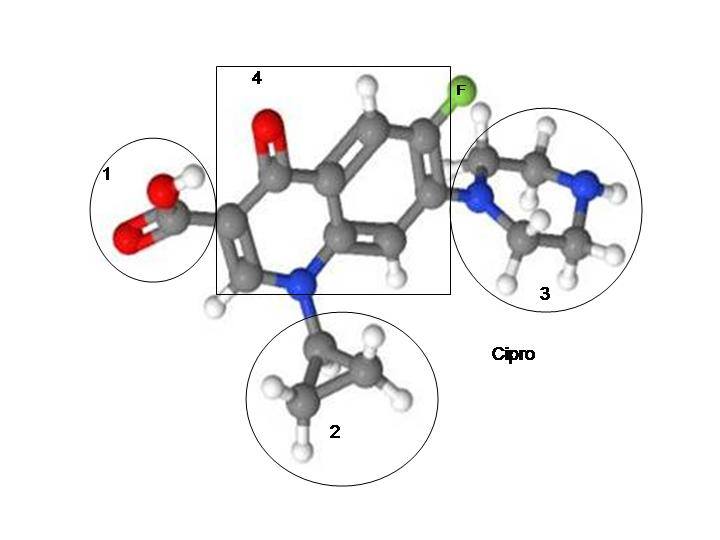Can Cbd Provide Relief From The Symptoms Of Fluoroquinolone Toxicity
Can CBD Provide Relief from the Symptoms of Fluoroquinolone Toxicity?
It’s fair to say that conventional antibiotics like penicillin and sulfonamides have gained a reputation for producing allergic reactions in a large share of their users. What many aren’t aware of is that not all antibiotics are created equal. One particularly worrying trend in the antibiotics space is the rash of side effects tied to broad-spectrum antibiotics, commonly known as fluoroquinolones.
Fluoroquinolones are a group of antibiotics that were designed to mimic natural substances (e.g. norfloxacin). These medications are classified as “broad-spectrum” antibiotics because they kill a wide range of bacteria that can be causing an infection in the body.
This group of antibiotics is divided into “generations” because the scientists that designed these medications thought that each new generation was more effective against different types of bacteria. Fluoroquinolones are also called second-generation quinolones, since they were developed after the first generation (e.g. ciprofloxacin, norfloxacin).
What is fluoroquinolone toxicity?
Fluoroquinolone toxicity is a major concern among the general population. The FDA finally issued a warning concerning the use of these drugs in 2007, when they advised the need to monitor patients for any signs of neurologic dysfunction, seizures or an inability to talk while taking these medications. The U.S. FDA has also urged physicians to monitor patients who are on fluoroquinolones for any signs of tendon rupture, which can lead to kidney damage and renal failure. Many people who take these medications may not be aware that they are putting themselves at risk for permanent side effects or abnormal bone development if they don’t take proper precautions while taking these medications. Fluoroquinolones have a tendency to cause harm in the body when taken continuously or for long periods of time. These medications are meant to be used in a cyclical manner, which means that they should only be ingested for a few days and then ceased until another cycle is needed. However, many people don’t adhere to this method of use, which puts them at risk for developing serious side effects. Although we may need over the counter pain relievers, they have consequences too, see here. For many users of fluoroquinolones, attempting to calm the symptoms of fluoroquinolone toxicity (FT) with the use of more synthetic drugs — themselves notorious for producing side effects of their own — is a prospect they’d rather not consider. In this post, we discuss whether natural alternatives such as artisanal CBD from reputable manufacturers like Crescent Canna can help relieve the symptoms of FT. Common Symptoms of Fluoroquinolone Toxicity
Before we go into how CBD can help against manifestations of FT, it’s worth noting what those symptoms are in the first place. Let’s look at some of the most common ones below, in no particular order: Nausea related with onsets of FT usually start out as a persistent bad taste lingering in the mouth, progressing on to lightheadedness, dizziness and gassiness. If you are looking for some helpful guides see here. Diarrhea from FT reportedly begins as a dramatic increase in bathroom visits, followed by rising urgency or incontinence. Continued use at this point can result in painful bowel movements and dehydration. Loss of appetite is among the most dangerous signs of FT, and yet one of the least considered. Even if FT is recognized in a timely manner and use is discontinued, a lingering loss of appetite can significantly slow recuperation rates thereafter. Vomiting is the second leading cause of dehydration during onsets of FT. Dehydration has the potential to dramatically extend pain or discomfort throughout bouts of FT because it leads to painful bowel movements and urination as well as bloating or gas. Stomach pain or cramps can be the most debilitating symptoms of FT, depending on individual pain tolerance and degree of fluoroquinolone overuse. In some cases, they can be so severe as to interfere with work, college or even social life in general. Nerve damage (to hands and feet) can manifest as anything from a slight loss of coordination to chronic pain or inflammation in joints and skeletal muscle. Hands and feet are among the first and most noticeable sites for these effects of FT. Shakiness (tremors) is another sign of nerve damage, but can manifest in major muscle groups in the arms, back and legs instead of starting in the hands and feet. Individuals suffering from symptoms of FT have come to be referred to as “floxies,” while the process of fluoroquinolone overuse is commonly known as “getting floxed.” Let’s go over how CBD works and how it can reduce the severity of symptoms associated with FT. What is CBD & How Does It Work?
CBD (cannabidiol) is one of the most important and well-researched cannabinoids, which are chemical compounds found naturally in hemp and marijuana. CBD is a non-psychoactive compound, meaning it does not produce a “high” for users because it doesn’t interact with the brain’s cannabinoid receptors like THC (tetrahydrocannabinol) does. CBD can be extracted from hemp or marijuana and used as an oil, eaten as food, applied topically to skin, or inhaled through vapor inhalation devices like vape pens or e-cigarettes. CBD derives its therapeutic potential via its interactions with the body’s endogenous cannabinoid system (ECS), which is a network of receptors located within the nervous system, immune system and peripheral organs. Studies show that CBD’s modulatory effect on the ECS can provide some relief from symptoms of common neurophysiological conditions like chronic pain, mood and even anxiety disorders. How CBD Can Help Against Symptoms of Fluoroquinolone Toxicity
CBD is currently being researched for its analgesic properties, which manifest in the reduction of the brain’s prostaglandin response. This can provide relief from symptoms of FT like stomach pain, migraines or muscle cramps. The spasmolytic properties of CBD are sufficiently well-established insofar as the FDA has approved the use of pharmaceutical-grade CBD (Epidiolex) for the calming of seizures brought about by Lennox-Gastaut syndrome, Dravet syndrome and others. This ability to calm spasticity makes CBD a viable option against stomach cramps, tremors and muscle spasms brought about by FT. Studies are also ongoing to explore the anti-inflammatory benefits of CBD, which is already commonly utilized in the sports medicine industry for sublingual and topical relief from swelling, welts and sprains. In the case of FT, CBD can play a role in reducing chronic inflammation associated with nerve or tissue damage in the hands and feet. The pain from nerve damage is largely tied to inflammation of joints and skeletal muscle, which can be debilitating in moderate to severe cases. It’s important to remember that cannabinoids like CBD have yet to be approved by the FDA for use against any disorder or illness except for epileptic seizures, and more studies will be required to fully establish their medicinal value for other conditions. However, as of this writing, large-scale correlation of anecdotal evidence — in the form of millions of product reviews and consumer insight online — make a good preliminary case for CBD’s broad therapeutic potential.
Fluoroquinolone toxicity is a major concern among the general population. The FDA finally issued a warning concerning the use of these drugs in 2007, when they advised the need to monitor patients for any signs of neurologic dysfunction, seizures or an inability to talk while taking these medications. The U.S. FDA has also urged physicians to monitor patients who are on fluoroquinolones for any signs of tendon rupture, which can lead to kidney damage and renal failure. Many people who take these medications may not be aware that they are putting themselves at risk for permanent side effects or abnormal bone development if they don’t take proper precautions while taking these medications. Fluoroquinolones have a tendency to cause harm in the body when taken continuously or for long periods of time. These medications are meant to be used in a cyclical manner, which means that they should only be ingested for a few days and then ceased until another cycle is needed. However, many people don’t adhere to this method of use, which puts them at risk for developing serious side effects. Although we may need over the counter pain relievers, they have consequences too, see here. For many users of fluoroquinolones, attempting to calm the symptoms of fluoroquinolone toxicity (FT) with the use of more synthetic drugs — themselves notorious for producing side effects of their own — is a prospect they’d rather not consider. In this post, we discuss whether natural alternatives such as artisanal CBD from reputable manufacturers like Crescent Canna can help relieve the symptoms of FT. Common Symptoms of Fluoroquinolone Toxicity
Before we go into how CBD can help against manifestations of FT, it’s worth noting what those symptoms are in the first place. Let’s look at some of the most common ones below, in no particular order: Nausea related with onsets of FT usually start out as a persistent bad taste lingering in the mouth, progressing on to lightheadedness, dizziness and gassiness. If you are looking for some helpful guides see here. Diarrhea from FT reportedly begins as a dramatic increase in bathroom visits, followed by rising urgency or incontinence. Continued use at this point can result in painful bowel movements and dehydration. Loss of appetite is among the most dangerous signs of FT, and yet one of the least considered. Even if FT is recognized in a timely manner and use is discontinued, a lingering loss of appetite can significantly slow recuperation rates thereafter. Vomiting is the second leading cause of dehydration during onsets of FT. Dehydration has the potential to dramatically extend pain or discomfort throughout bouts of FT because it leads to painful bowel movements and urination as well as bloating or gas. Stomach pain or cramps can be the most debilitating symptoms of FT, depending on individual pain tolerance and degree of fluoroquinolone overuse. In some cases, they can be so severe as to interfere with work, college or even social life in general. Nerve damage (to hands and feet) can manifest as anything from a slight loss of coordination to chronic pain or inflammation in joints and skeletal muscle. Hands and feet are among the first and most noticeable sites for these effects of FT. Shakiness (tremors) is another sign of nerve damage, but can manifest in major muscle groups in the arms, back and legs instead of starting in the hands and feet. Individuals suffering from symptoms of FT have come to be referred to as “floxies,” while the process of fluoroquinolone overuse is commonly known as “getting floxed.” Let’s go over how CBD works and how it can reduce the severity of symptoms associated with FT. What is CBD & How Does It Work?
CBD (cannabidiol) is one of the most important and well-researched cannabinoids, which are chemical compounds found naturally in hemp and marijuana. CBD is a non-psychoactive compound, meaning it does not produce a “high” for users because it doesn’t interact with the brain’s cannabinoid receptors like THC (tetrahydrocannabinol) does. CBD can be extracted from hemp or marijuana and used as an oil, eaten as food, applied topically to skin, or inhaled through vapor inhalation devices like vape pens or e-cigarettes. CBD derives its therapeutic potential via its interactions with the body’s endogenous cannabinoid system (ECS), which is a network of receptors located within the nervous system, immune system and peripheral organs. Studies show that CBD’s modulatory effect on the ECS can provide some relief from symptoms of common neurophysiological conditions like chronic pain, mood and even anxiety disorders. How CBD Can Help Against Symptoms of Fluoroquinolone Toxicity
CBD is currently being researched for its analgesic properties, which manifest in the reduction of the brain’s prostaglandin response. This can provide relief from symptoms of FT like stomach pain, migraines or muscle cramps. The spasmolytic properties of CBD are sufficiently well-established insofar as the FDA has approved the use of pharmaceutical-grade CBD (Epidiolex) for the calming of seizures brought about by Lennox-Gastaut syndrome, Dravet syndrome and others. This ability to calm spasticity makes CBD a viable option against stomach cramps, tremors and muscle spasms brought about by FT. Studies are also ongoing to explore the anti-inflammatory benefits of CBD, which is already commonly utilized in the sports medicine industry for sublingual and topical relief from swelling, welts and sprains. In the case of FT, CBD can play a role in reducing chronic inflammation associated with nerve or tissue damage in the hands and feet. The pain from nerve damage is largely tied to inflammation of joints and skeletal muscle, which can be debilitating in moderate to severe cases. It’s important to remember that cannabinoids like CBD have yet to be approved by the FDA for use against any disorder or illness except for epileptic seizures, and more studies will be required to fully establish their medicinal value for other conditions. However, as of this writing, large-scale correlation of anecdotal evidence — in the form of millions of product reviews and consumer insight online — make a good preliminary case for CBD’s broad therapeutic potential.
Can Cbd Provide Relief From The Symptoms Of Fluoroquinolone Toxicity?
I believe it can. Research is showing the powerful effects of this remarkable plant compound, and I feel it has its place as a safe alternative to over the counters medicine.










… [Trackback]
[…] Read More Info here on that Topic: floxiehope.com/can-cbd-provide-relief-from-the-symptoms-of-fluoroquinolone-toxicity/ […]
… [Trackback]
[…] Find More Information here on that Topic: floxiehope.com/can-cbd-provide-relief-from-the-symptoms-of-fluoroquinolone-toxicity/ […]
… [Trackback]
[…] Find More to that Topic: floxiehope.com/can-cbd-provide-relief-from-the-symptoms-of-fluoroquinolone-toxicity/ […]
… [Trackback]
[…] Read More Information here to that Topic: floxiehope.com/can-cbd-provide-relief-from-the-symptoms-of-fluoroquinolone-toxicity/ […]
… [Trackback]
[…] Info to that Topic: floxiehope.com/can-cbd-provide-relief-from-the-symptoms-of-fluoroquinolone-toxicity/ […]
… [Trackback]
[…] There you will find 29849 more Info on that Topic: floxiehope.com/can-cbd-provide-relief-from-the-symptoms-of-fluoroquinolone-toxicity/ […]
… [Trackback]
[…] Here you will find 6250 additional Information on that Topic: floxiehope.com/can-cbd-provide-relief-from-the-symptoms-of-fluoroquinolone-toxicity/ […]
… [Trackback]
[…] Info on that Topic: floxiehope.com/can-cbd-provide-relief-from-the-symptoms-of-fluoroquinolone-toxicity/ […]
… [Trackback]
[…] Info to that Topic: floxiehope.com/can-cbd-provide-relief-from-the-symptoms-of-fluoroquinolone-toxicity/ […]
… [Trackback]
[…] Find More to that Topic: floxiehope.com/can-cbd-provide-relief-from-the-symptoms-of-fluoroquinolone-toxicity/ […]
… [Trackback]
[…] Read More Information here to that Topic: floxiehope.com/can-cbd-provide-relief-from-the-symptoms-of-fluoroquinolone-toxicity/ […]
… [Trackback]
[…] Find More here on that Topic: floxiehope.com/can-cbd-provide-relief-from-the-symptoms-of-fluoroquinolone-toxicity/ […]